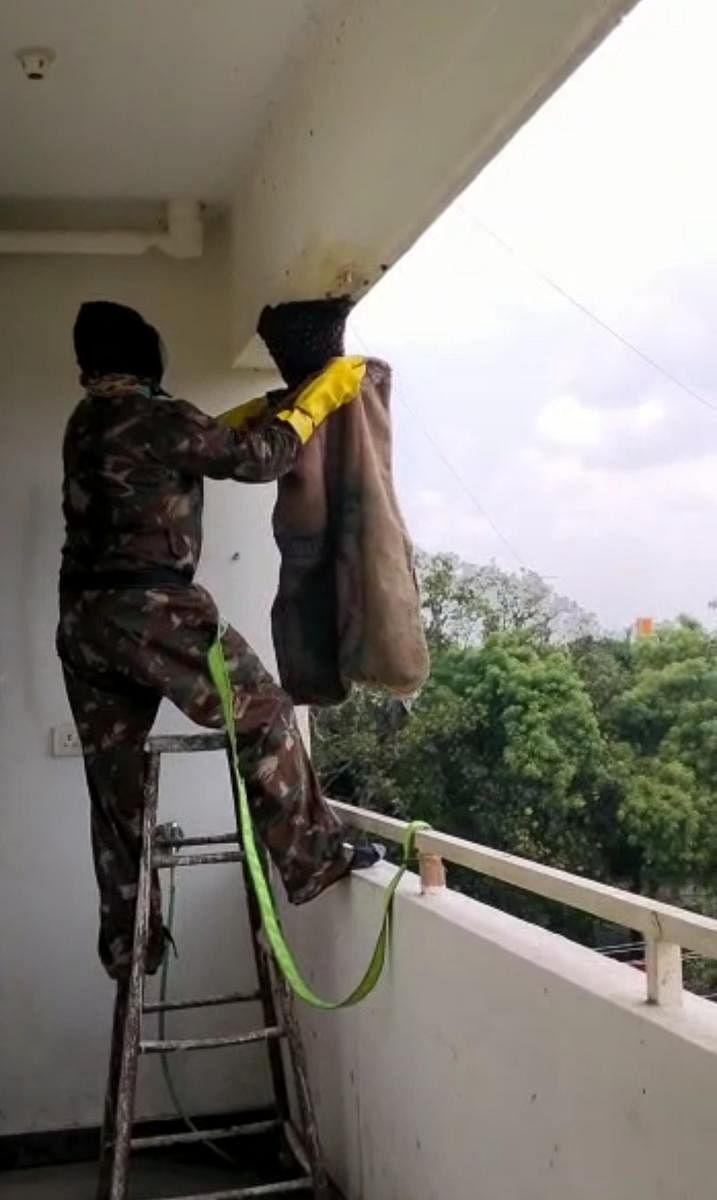
Pest control agencies often remove bees from residential areas by fogging and killing them. But experts say it is better to relocate them. Here are some professionals for the job.
Venkatesh V, a resident of K R Puram, has been relocating bees for a decade now.
He fields 30 inquiries every day and has done relocations in and around 100 km of the city limits, districts like Hassan and Chikkaballapura included.
He wears protective gear (including a body suit, gloves, dungarees, monkey cap and gumboots) and takes around one hour to 90 minutes for these relocations. “My gear protects me and I have not had any accidents yet,” he says.
He releases the bees in dense areas like Kanakapura Road, Bannerghatta Road and beyond NICE Road. Venkatesh charges Rs 1,500-Rs 1,700 for the relocation.
Call: 85538 14264
Dhananjaya R, a resident of Kunigal in Tumakuru district, started relocating bees two years ago and he does this across Karnataka.
“If the beehive is easily reachable, I move it myself. Else, I take assistance from others,” he says. Dhananjaya uses a mosquito net or a cardboard box, a bee veil, a water sprayer, a knife and a stool. The water spray simulates the rain, helping the bees to settle down and curtail stinging. The bees are left at a nearby forest patch or a site with 20-30 trees but zero human habitation. “I have travelled up to 400 km to relocate. In the last two months, I have done around 180 relocations,” he says. He charges Rs 2,000 for relocations within 100 km (from Kunigal) and more if farther.
Call: 84948 46212
Santhosh Kumar, a resident of Yelahanka, has been relocating bees for 17 years, using a net-like container, a cutting tool and a bee smoker (a device used in beekeeping to calm the honeybees).
“It takes almost 45 minutes to remove a hive. I release the bees in a tree-dense area, which doesn’t have buildings in the
5 km radius,” he says. He does around 100-150 relocations in a year, mostly during the April-May and November-December seasons. “I have done many relocations from Yeshwanthpur, K R Puram and Yelahanka,” he informs. He charges Rs 1,000 and upwards.
Call: 92427 06343
Relocation training
K T Vijayakumar, a scientist with the University of Agricultural Sciences, Bengaluru, says, “Most people in the city kill the bees by spraying insecticide or cutting the combs but we have been training people in relocation and beekeeping.” Call: 2363 6766
When to move the hive...
Apoorva B V, chairman, The Hive Trust, says, “When the hive is in closer proximity to areas of human interaction, relocation is needed,” he says. If the hives are at points that humans do not access, avoid moving the bees. “In such cases, allow them to complete their life cycle and leave. Swarms of bees visit Bengaluru from March to June and October to December,” says Apoorva. To avoid the formation of beehives, one can create fixtures to cover the projections or block ceilings with a cloth.
Apoorva conducts online talks and visits residential communities to sensitise people about living with bees. For details, visit thehivetrust.org